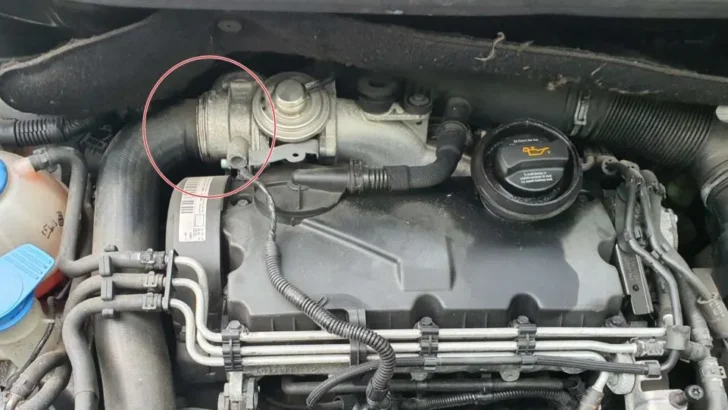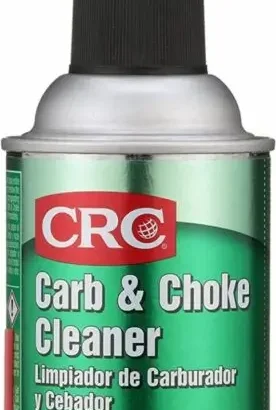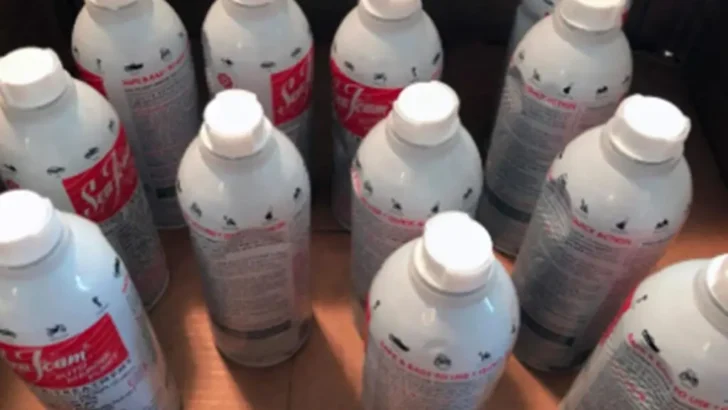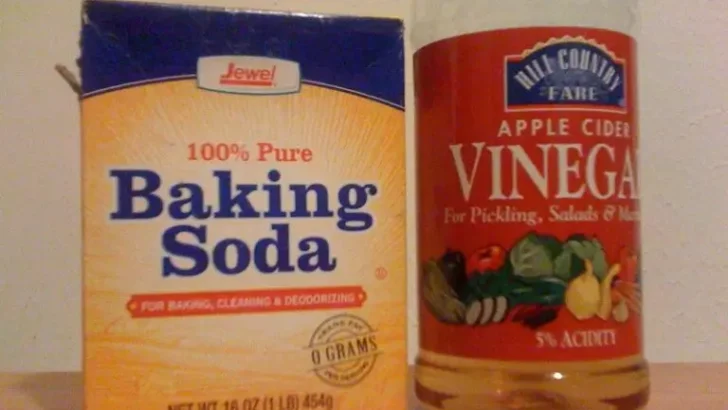If your car is feeling under the weather, you may be considering using a throttle body cleaner to help it feel better. Before you make a purchase, though, consider some of the top alternatives for throttle body cleaners.
In this blog post, we’ll outline seven methods for cleaning your throttle body without using a commercial product. Keep reading for more details!
- Key Takeaway
- What is Throttle Body Cleaner?
- The 7 Best Throttle Body Cleaner Alternatives
- FAQs
- Q: How often should I clean my throttle body?
- Q: What are the signs that my throttle body needs cleaning?
- Q: Can I use an alternative to throttle body cleaner?
- Q: What is the best throttle body cleaner alternative?
- Q: How do I use brake cleaner as a throttle body cleaner alternative?
- Q: Are there any precautions to take when using throttle body cleaner alternatives?
- Q: Can I use throttle body cleaner alternatives on all types of engines?
- Q: Can I clean the throttle body without removing it?
- Q: Should I clean the throttle body myself or have it done by a professional?
- In Conclusion
Key Takeaway
The 7 Best Throttle Body Cleaner Alternatives
- WD40
- Carburetor cleaner
- Choke cleaner
- Sea foam spray
- Wire brush
- Baking soda and vinegar
- Compressed air
What is Throttle Body Cleaner?
A throttle body cleaner is a solvent-based solution used to clean the throttle body, the part of an engine that controls the amount of air flowing into it.
Over time, carbon deposits and other forms of debris can build up in the throttle body, negatively impacting the vehicle’s performance by disrupting the air-fuel mixture.
Throttle body cleaner helps remove these build-ups, resulting in improved engine performance and efficiency.
It is typically sprayed directly onto the throttle body and wiped off, making it a simple yet effective maintenance tool for car owners.
The 7 Best Throttle Body Cleaner Alternatives

Like most people, you likely neglect your throttle body until it becomes dirty. By then, the gunk has already set in and can cause all sorts of issues. Furthermore, taking your car in for professional cleaning can be expensive; here is a list of the 7 best alternatives to throttle body cleaner.
1. WD40

WD40 is a petroleum-based product originally created to prevent corrosion. It contains various oils, including mineral oil, which can be used on virtually anything – from metal to plastic. As an excellent throttle body cleaner alternative, WD40 works great.
When it comes to carbon deposit buildup, WD40 is your go-to product. This product dissolves and removes carbon deposits from surfaces while cleaning and protecting against corrosion. Safe for use on all metals including aluminum, brass, copper, stainless steel, and zinc WD40 is designed with your best interests in mind.
When applied to a surface, WD40 creates an impervious film that helps prevent further corrosion. It may also be used to lubricate moving parts and keep them functioning optimally.
First, remove the throttle body from your engine. Next, locate the IAC (idle air control) valve which should be located on either side of the throttle body.
WD40 can be used to clean the throttle body, but it’s essential that no WD40 gets on the IAC valve. To begin, spray some WD40 onto a cloth and wipe down the inside of the throttle body; paying special attention to areas around the IAC valve.
Once you’ve cleaned the throttle body, attach it back to your engine and begin starting it up again. If your engine is still idling irregularly, then you may need to clean the IAC valve itself. To do this, take out the IAC valve from its attachment on the throttle body and spray WD40 onto a clean cloth.
Clean the inside of the IAC valve and then reattach it to the throttle body.
2. Carburetor cleaner

Carburetor cleaners are typically composed of volatile organic compounds (VOCs), petroleum distillates, and alcohol.
VOCs are chemicals that evaporate easily at room temperature while petroleum distillates are refined from crude oil with solvents like kerosene and naphtha.
Alcohol also plays a significant role in carburetor cleaners due to its strong smell due to the VOCs present.
Some carburetor cleaners also contain additives to dissolve gum and varnish deposits. These may include surfactants, corrosion inhibitors, or emulsifiers.
Surfactants lower the surface tension of water so deposits can be more easily removed while corrosion inhibitors protect metal parts from rust and corrosion and emulsifiers keep oil and water separate.
Carburetor cleaners come in aerosol cans or bottles. Bulk quantities like drums or barrels of cleaners may also be purchased. Carburetor cleaners are used to clean carburetors, fuel injectors, and intake valves of an engine.
They may also be applied to other engine components like throttle bodies, air filters, or Mass Air Flow sensors. It should only be used when the engine is cold as this prevents damage from hot surfaces.
3. Choke cleaner

Choke cleaner is composed of various chemicals, such as petroleum distillates and hydrocarbons. When mixed together, they create a highly flammable and toxic liquid. Therefore, it should only be used in well-ventilated areas and never be ingested.
If you come into contact with a choke cleaner, be sure to wash your hands thoroughly with soap and water; if eye contact occurs, flush your eyes with water for at least 15 minutes; if fumes have been inhaled from using the choke cleaner, move to fresh air immediately and seek medical help if needed.
Choke cleaners are commonly used to clean carburetors and other engine parts such as the throttle body. Over time, carburetors can become clogged with dirt and debris, causing your engine to run more slowly or poorly than usual. A choke cleaner helps remove these buildups so your vehicle runs more efficiently once again.
Before using choke cleaner, be sure to read its label carefully. Some cleaners can be hazardous for certain surfaces, so make sure the product meets your requirements. Choke cleaners typically go in well-ventilated areas due to their highly flammable and poisonous nature.
4. Sea foam spray

SeaFoam is a petroleum-based product, so it has the capacity to break down and dissolve carbon deposits. When applied directly into your throttle body, SeaFoam helps clean out these carbon buildups that have built up over time, improving engine performance while helping extend its life.
SeaFoam can be employed as either a preventive measure to keep carbon deposits from accumulating in your engine, or it can be utilized to clean out an already-clogged engine.
Either way, SeaFoam is an efficient tool for keeping your engine running optimally.
SeaFoam is a petroleum product, made from crude oil. It contains several different hydrocarbons such as alkanes, cycloalkanes, and aromatics that have been separated from the crude oil through fractional distillation.
Once refined to remove impurities and give it its desired properties, SeaFoam then goes through further purification to give it its desired characteristics.
SeaFoam spray has many uses, one of which is as a fuel system cleaner. It helps clean out your engine by clearing away deposits that have built up over time, improving fuel economy, and reducing emissions. SeaFoam can be used in all kinds of engines such as cars, trucks, motorcycles, boats, and more for this purpose.
5. Wire brush

Wire brushes are typically constructed of steel, brass, or bronze and the bristles can vary in stiffness depending on their intended use. They’re employed for various tasks like cleaning, polishing, and removing rust.
When choosing a wire brush, there are various types available on the market. A softer brush may be ideal for delicate surfaces while a stiffer one might work best at eliminating stubborn dirt and grime. When in doubt, consult with an expert to determine which type of wire brush best meets your requirements.
Begin by disconnecting the negative battery cable. Afterward, take apart the air intake duct and throttle body assembly, then use a wire brush to clean them thoroughly.
Reinstall these parts back together along with their respective air intake duct, then reconnect your negative battery cable – you’re now all done! Congratulations! You have now successfully cleaned your throttle body using a wire brush!
6. Baking soda and vinegar

Baking soda and vinegar, when mixed together, create an acidic reaction that breaks down carbon deposits. This method is widely used in cleaning products due to its efficiency in eliminating stubborn dirt and grime.
Cleaning a throttle body is essential to remove any deposits that have built up on the Throttle plate. Failure to do so could cause your engine to run rough and eventually result in engine failure. For best results, mix baking soda and vinegar together; baking soda breaks down deposits while vinegar helps loosen them.
Mix equal parts baking soda and vinegar together, then apply it to the Throttle Plate with a clean cloth. Let it sit for several minutes, then wipe away with another cloth or brush until clean. Afterward, you should also clean the IAC (Idle Air Control Valve), located just behind the Throttle plate which regulates how much air enters the engine during idling.
To clean the IAC Valve, take it away from the throttle body and soak it in a mixture of baking soda and vinegar for several minutes.
Rinse with clean water before attaching it back onto the throttle body. Start your engine and let idle for several minutes to allow the IAC Valve time to adjust itself. If your engine still runs rough after cleaning both components, one or both may need replacing.
7. Compressed air

Compressed air is the best way to clean a throttle body. It can effectively eliminate dirt and grime that has built up over time. For optimal performance, use compressed air at least once annually for thorough cleaning of your throttle body. Here’s how:
First, disconnect the negative battery cable. Doing this will prevent any sparks from occurring while working on the throttle body.
Next, locate the throttle body and disconnect its intake hose. Doing this will allow you to view the throttle plate inside of the throttle body.
Compressed air can be used to remove all dirt and debris from inside the throttle body. Make sure all nooks and crannies are addressed.
Once you’re finished, reconnect the intake hose and reconnect the negative battery cable. Your throttle body should now be spotless and free of dirt or grime. Repeat this process at least once a year to maintain optimal performance in your throttle body.
FAQs
Q: How often should I clean my throttle body?
A: It is generally recommended to clean your throttle body every 30,000 miles or as specified in your vehicle’s maintenance schedule.
Q: What are the signs that my throttle body needs cleaning?
A: Signs that your throttle body may need cleaning include rough idling, stalling, poor acceleration, and a decrease in fuel efficiency.
Q: Can I use an alternative to throttle body cleaner?
A: Yes, there are several alternatives to throttle body cleaner that can be effective in cleaning the throttle body, such as brake cleaner, carburetor cleaner, and electrical contact cleaner.
Q: What is the best throttle body cleaner alternative?
A: The best throttle body cleaner alternative depends on your specific needs and preferences. Brake cleaner is often recommended as a highly effective alternative.
Q: How do I use brake cleaner as a throttle body cleaner alternative?
A: To use brake cleaner as a throttle body cleaner alternative, you should first remove the air intake tube, then spray the brake cleaner directly onto the throttle body, and finally use a clean cloth or brush to remove any loosened debris.
Q: Are there any precautions to take when using throttle body cleaner alternatives?
A: Yes, when using throttle body cleaner alternatives, it is important to follow the manufacturer’s instructions, avoid spraying the cleaner on any plastic or rubber components, and ensure proper ventilation.
Q: Can I use throttle body cleaner alternatives on all types of engines?
A: Throttle body cleaner alternatives can generally be used on most types of engines, including gasoline, diesel, and fuel-injected engines. However, it is always recommended to consult your vehicle’s owner’s manual or seek professional advice if you are unsure.
Q: Can I clean the throttle body without removing it?
A: Yes, it is possible to clean the throttle body without removing it by using a throttle body cleaner alternative and a soft brush or cloth to reach and clean the inside of the throttle body.
Q: Should I clean the throttle body myself or have it done by a professional?
A: Cleaning the throttle body can be a relatively simple task for those with some mechanical knowledge and experience. However, if you are unsure or uncomfortable performing the task yourself, it is always recommended to consult a professional mechanic.
In Conclusion
Products such as WD-40 and Seafoam Cleaner are commonly mentioned as good options due to their non-corrosive nature.
Other alternatives include carburetor cleaner, choke cleaner, and even household solutions like baking soda and vinegar.
